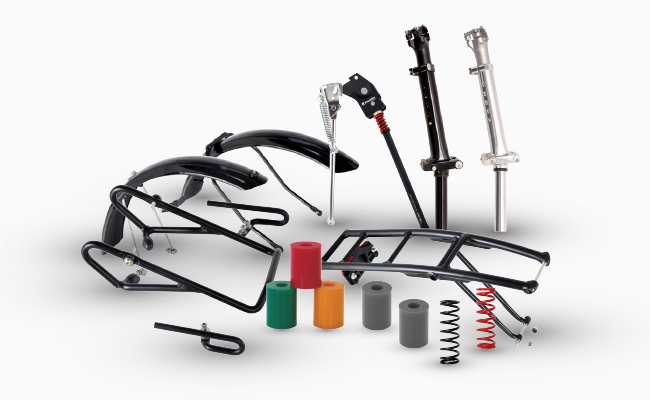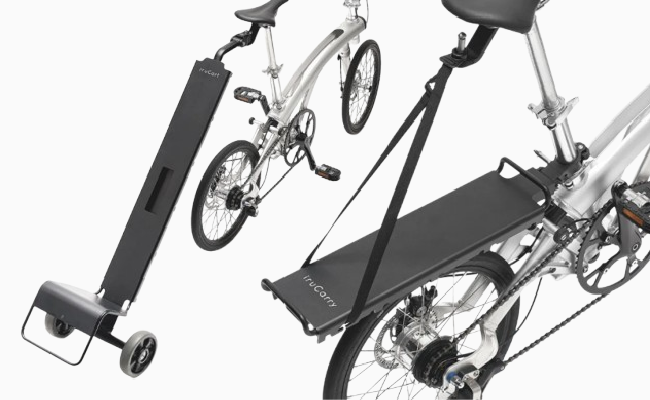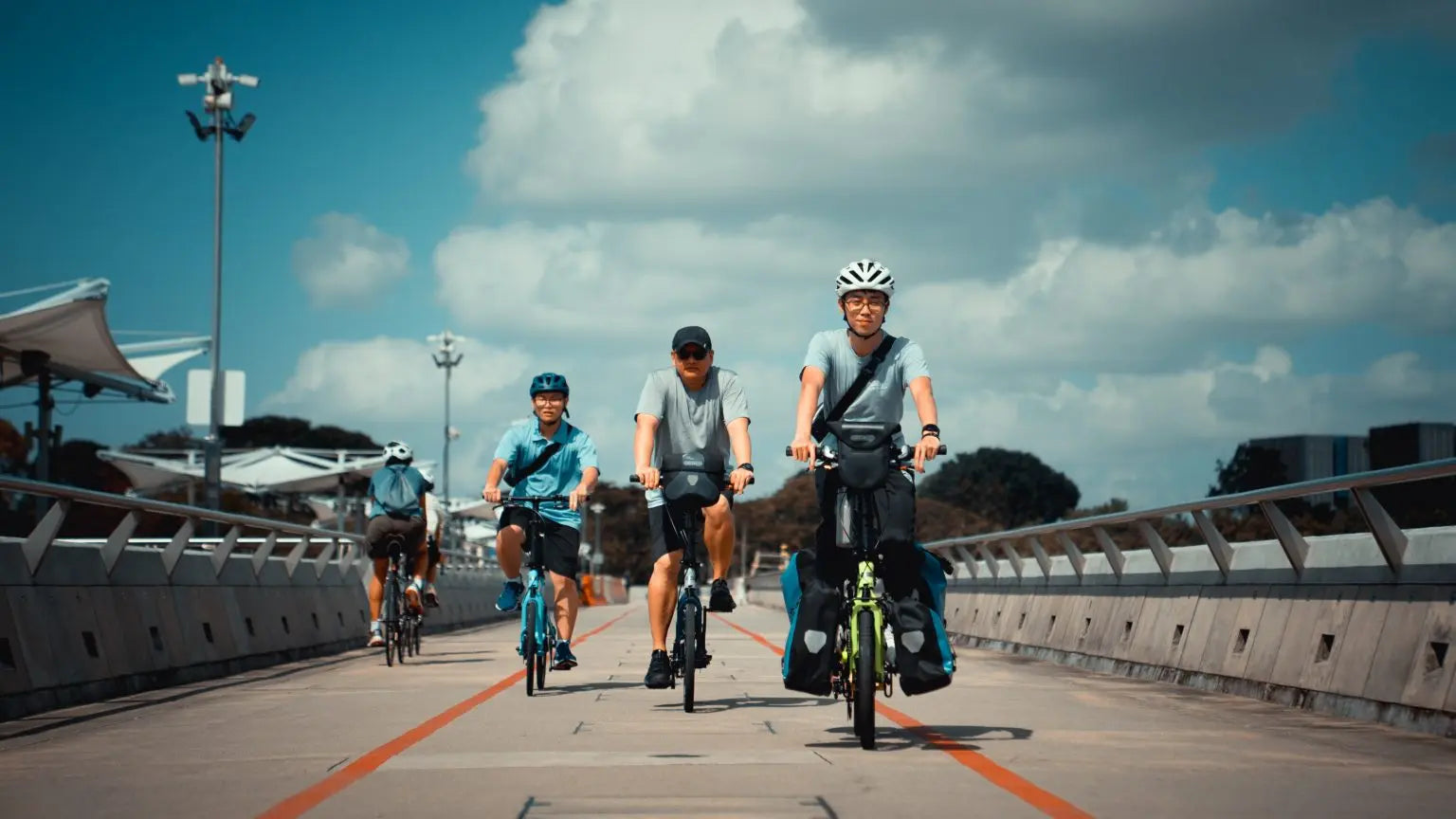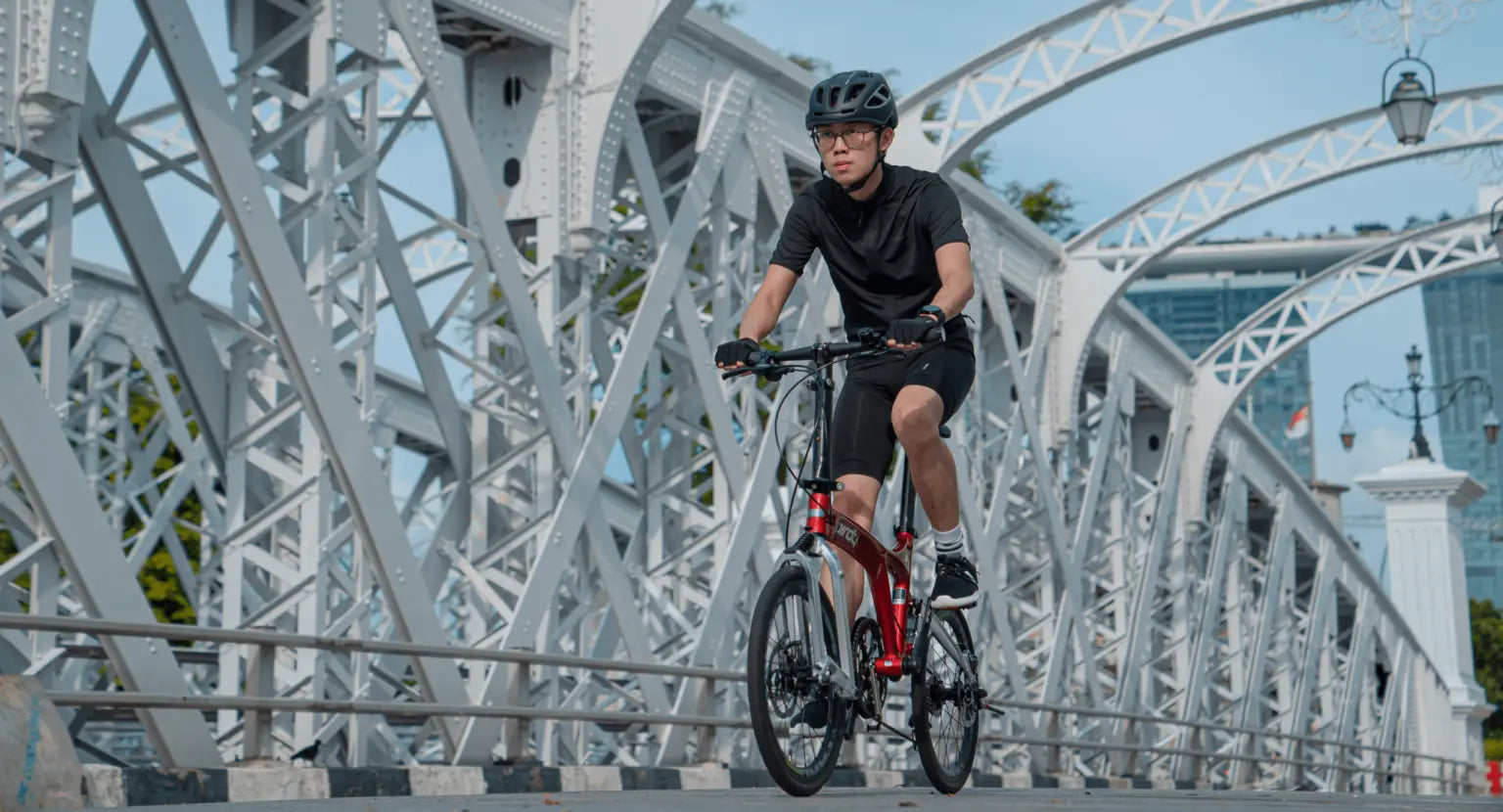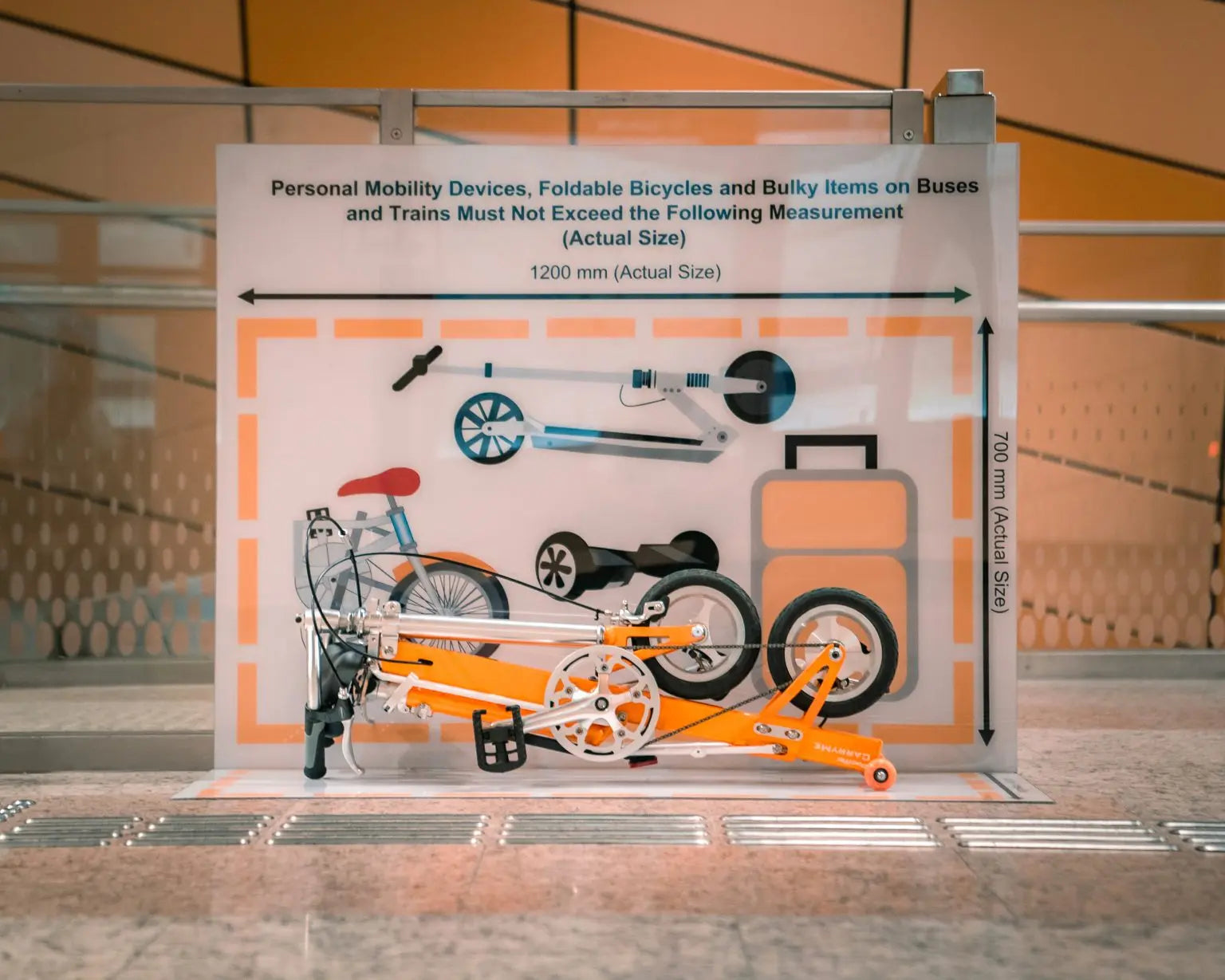
How did the current foldable bike scheme come about?
Have you ever noticed these posters while taking the train? These posters depict the maximum allowable size for any foldable bicycles on board public transport. These guidelines, however, did not just exist overnight. There was actually an extremely long and arduous process that went behind coming up with these rules, and there were many people involved that worked tirelessly to ensure its successful implementation. Some of the stakeholders involved were the Land Transport Authority (LTA), as well as representatives from the bus and taxi unions. Among them were the Founder and Co-Founder of Mighty Velo, Mr Steven Lim and Ms Vivian Yuan.
1. The Curious Case of the Foldies
In 2006, Steven and Vivian acquired their brand-new folding bikes all the way from Taiwan, eager to explore the streets of Singapore. However, their joy was quickly hindered as they discovered that they were not allowed to bring their foldies on trains or buses. More often than not, they would find themselves getting stopped by the station officials when carrying a foldie in. Meanwhile, countries like Australia and Hong Kong were already implementing measures permitting the carriage of foldable bikes aboard public transport. Confused by this restriction as there were no specific regulations against it, they realized it was time to take action and pave the way for foldable bikes in the public transport system.
2. Research and Determination:
Armed with passion and a thirst for knowledge, Steven and Vivian delved into extensive research on folding bicycles. They tirelessly gathered information and brainstormed ideas to devise laws that would enable the seamless integration of foldies into the local market. With limited information on the subject at the time, they had to start from scratch, determined to make a difference. This information would turn out to be vital because they would have to propose these new laws to important stakeholders during round table discussions later on.
3. Proposing Change:
Having gathered their findings, Steven and Vivian proposed new laws during numerous meetings and discussions with relevant authorities, including representatives from the Land Transport Authority and transport unions. However, resistance from bus and taxi drivers posed a significant challenge. They had concerns about overcrowding, and were adamant on implementing any measures that permitted the carriage of foldable devices aboard public transport. To address these concerns, Steven and Vivian conducted simulations day and night, demonstrating how foldable bikes could be brought onto public transport without causing disruptions.
4. Triumph Against All Odds:
In 2008, after relentless efforts and perseverance, Steven and Vivian’s hard work finally paid off. The Land Transport Authority implemented concrete rules permitting foldable bikes and personal mobility devices (PMDs) on public transport. However, there were still restrictions in place, such as limited hours during which foldable bikes were allowed on board. The rule at that time was that foldable devices were permitted on public transport, but only from 10am – 4pm. These limitations sparked public outcry, with netizens calling for more flexibility and benefits as many of the people that the rule affected were of the working class. They saw minimal benefit from the current guidelines as it did not permit bringing a foldie aboard public transport during peak hours.
5. A Game-Changing Victory:
28th May 2017 was a big day for foldable bike users. Foldable bicycles were finally permitted on public transport all day, every day, without any time restrictions. This marked a turning point for commuters in Singapore, allowing them to seamlessly transition between cycling and public transport, offering convenience and flexibility like never before.
So, what are the current guidelines?
As you may know, the Foldable Bike Scheme in Singapore allows commuters to bring their foldable bikes onto public transport, including buses and trains, during off-peak hours. This scheme eliminates the barriers of traditional bike commuting, where bicycles are not permitted on public transport during peak hours due to limited space and potential inconvenience to other passengers. To ensure the smooth integration of foldable bikes into public transport, certain safety measures and guidelines are in place. For example, cyclists must fold their bikes before boarding buses or trains to minimize space occupation. Additionally, it is essential to be mindful of fellow passengers and adhere to any rules or instructions provided by transport authorities. By following these guidelines, commuters can enjoy a harmonious and efficient travel experience.
Rules and Guidelines:
Folding Requirements:
Your foldable bicycle should not exceed 120cm by 70cm by 40cm when folded. All bicycles sold by Mighty Velo are within LTA guidelines and can be brought up on the train and bus.
Folding Obligation:Always keep your foldable device folded at MRT/LRT stations, bus interchanges/terminals, and while on trains and buses. Unfolding the bike may take up unnecessary space and restrict the movement of other commuters.
No Riding Indoors:
Riding your foldable device within MRT/LRT stations and bus interchanges/terminals is prohibited. Instead, push or carry your folded device. Riding your bicycle indoors poses a hazard to fellow commuters, especially the frail and the elderly.
No Upper Deck or Staircase:
Foldable bicycles are not permitted on the upper deck of buses or on staircases leading to the upper deck.
Guidelines for a Smooth Experience:
To ensure a pleasant journey for both yourself and fellow commuters, here are some additional guidelines to follow:
Responsible Carriage:
Have your foldable device close to you at all times. It is your responsibility to safely carry your foldable bicycle and avoid blocking aisles and doors.
Train Car Selection:
When traveling by train, consider using the first or last car, as these tend to be less crowded. By doing so, you need not squeeze with the crowd as you will have more space for yourself and your foldable device.
Wide Fare Gates:
Where available, use the wide fare gates at MRT/LRT stations. As the wide fare gates have broader walkways, it makes it easier for you to enter the train station with your foldable device.
Conclusion:
The current guidelines to allow foldable bicycles on public transport offers commuters greater convenience and encourages active mobility. It also advocates commuters to be considerate towards other passengers while using the public transport. By adhering to the rules and guidelines outlined, you can make the most of this opportunity while ensuring the comfort and safety of fellow passengers. So, whether you’re looking to shorten your daily commute or embark on exciting adventures, bring your foldable device on board and enjoy the seamless integration of public transport with your active lifestyle and exercise opportunities. Happy commuting!


